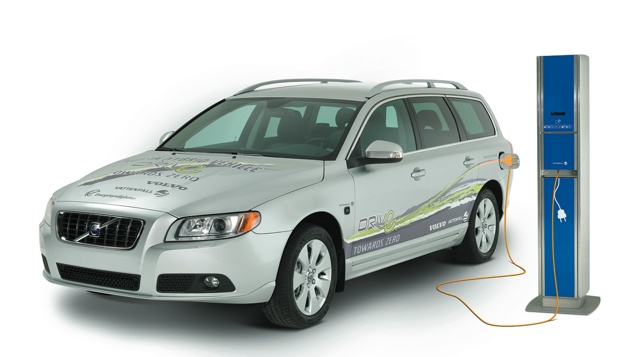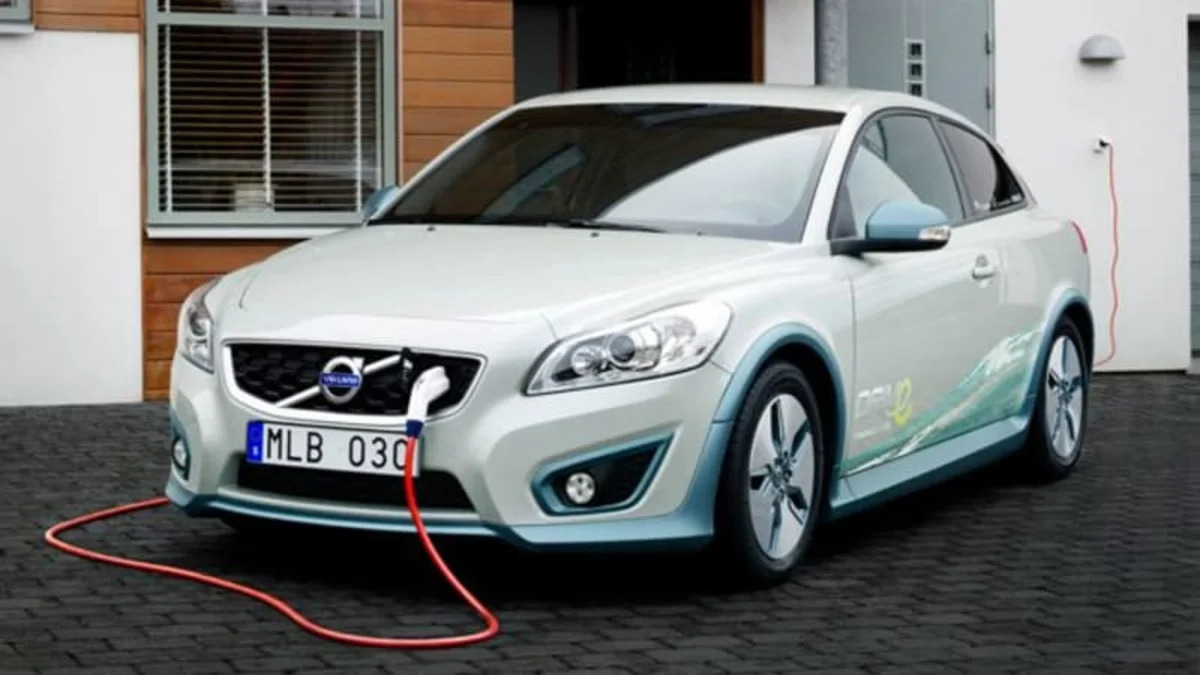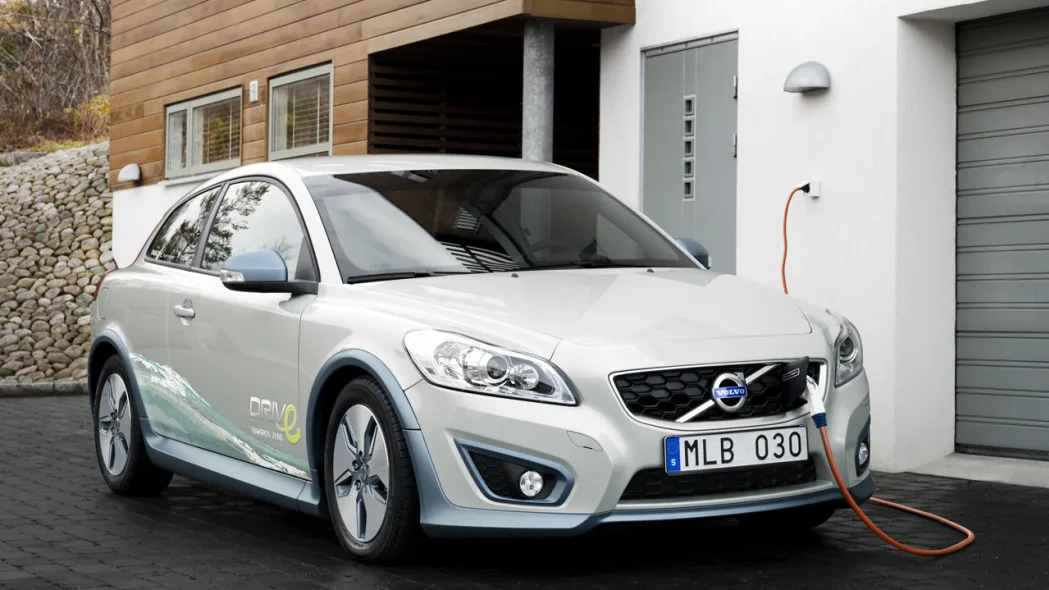Says they aren't always ready to compete in the automotive industry
Volvo's big news at the Paris Motor Show was the confirmation that the C30 battery electric vehicle (BEV) concept would be put into production. We saw the all-electric car at the Detroit Auto Show earlier this year and again in Indianapolis during an EnerDel event. The information we heard back then – that the C30 BEV will not come to the U.S. is now outdated and wrong, as Paul Gustavsson, the architect behind Volvo's electrification strategy, told AutoblogGreen in a telephone interview today. Gustavsson told AutoblogGreen that customer demand in both China and America changed some minds and that the plug-in C30 will indeed come to those two markets at some point.
Ten C30 BEVs are already on the road in Goetborg, Sweden, part of a trial fleet with Energi that began a few weeks ago. More importantly, Gustavsson said that customer deliveries will start in Sweden sometime next year, and that people will be able to get the car for something between a three- and five-year lease. The cost for these leases is not yet set, but Gustavsson said that, surprise, it will likely be higher than a similar liquid-powered car lease. Still, he said, the lease cost should be compared to the full running costs of a standard car, even though Volvo knows that people are willing to pay little more for environmentally conscious vehicles.
Gustavsson didn't say how many C30 BEVs would be leased, but said it would be in the hundreds and that Volvo is keeping production capacity flexible. This is important, since he said, "Our new owners [Geely] are very keen to focus on electrification," adding that Volvo is trying to figure out how exactly to start C30 BEV test fleets in California and China. Volvo may be moving slowly and cautiously to get its first plug-in vehicles to the people, but Gustavsson said the company thinks electric vehicles will play a bigger role in the industry starting in around 2017-2018. By 2020, he said, Volvo expects electric cars, both plug-in hybrids and full electric vehicles, to make up between five and 10 percent of the market. (This post continues after the jump.)
Volvo C30 BEV prototype – Click above for high-res image gallery
Volvo's big news at the Paris Motor Show was the confirmation that the C30 battery electric vehicle (BEV) concept would be put into production. We saw the all-electric car at the Detroit Auto Show earlier this year and again in Indianapolis during an EnerDel event. The information we heard back then – that the C30 BEV will not come to the U.S. is now outdated and wrong, as Paul Gustavsson, the architect behind Volvo's electrification strategy, told AutoblogGreen in a telephone interview today. Gustavsson told AutoblogGreen that customer demand in both China and America changed some minds and that the plug-in C30 will indeed come to those two markets at some point.
Ten C30 BEVs are already on the road in Goetborg, Sweden, part of a trial fleet with Energi that began a few weeks ago. More importantly, Gustavsson said that customer deliveries will start in Sweden sometime next year, and that people will be able to get the car for something between a three- and five-year lease. The cost for these leases is not yet set, but Gustavsson said that, surprise, it will likely be higher than a similar liquid-powered car lease. Still, he said, the lease cost should be compared to the full running costs of a standard car, even though Volvo knows that people are willing to pay little more for environmentally conscious vehicles.
Gustavsson didn't say how many C30 BEVs would be leased, but said it would be in the hundreds and that Volvo is keeping production capacity flexible. This is important, since he said, "Our new owners [Geely] are very keen to focus on electrification," adding that Volvo is trying to figure out how exactly to start C30 BEV test fleets in California and China. Volvo may be moving slowly and cautiously to get its first plug-in vehicles to the people, but Gustavsson said the company thinks electric vehicles will play a bigger role in the industry starting in around 2017-2018. By 2020, he said, Volvo expects electric cars, both plug-in hybrids and full electric vehicles, to make up between five and 10 percent of the market. (This post continues after the jump.)
When he announced the expanded availability of the C30 BEV, Volvo's new CEO, Stefan Jacoby (fresh from Volkswagen of America) said that, "we will set the standard in the industry (for electric cars)." What's interesting is that Jacoby hasn't always been a big fan of plug-in vehicles. While he was still at VW, he said that electric vehicles are too expensive and that their batteries are too heavy and not powerful enough. Gustavsson said he hasn't spoken with Jacoby about this change of heart, but that he could speculate that, "We have a number of electric car projects. It is also perhaps a little more important to [Volvo] than Volkswagen."

Volvo V70 plug-in hybrid concept – Click above for high-res image gallery
Volvo has announced two big plug-in vehicle project, the C30 BEV and a plug-in diesel hybrid that is supposed to come to market in 2012. This vehicle might be the plug-in V70 wagon that Volvo has revealed, but Gustavsson wouldn't comment on that. He would talk about how the automaker is looking at lithium batteries from two suppliers, EnerDel and LG Chem. The C30 BEV will have a 23-kWh battery from EnerDel that is packaged into the bottom of the trunk and so doesn't take away any carrying capacity. This pack weighs about 300 kilograms (660 pounds) and the overall weight of the vehicle is similar to a standard C30. The plug-in hybrid, on the other hand, will use a 11.3 kWh pack (we previously heard 12 kWh) that's packaged under the floor paired to a 60 kw motor. This battery pushes the trunk floor up about 60 millimeters and will take around five hours to charge and could offer a 30-mile electric-only range.
Gustavsson said that we are in a new and exciting era of battery suppliers – a lot of them coming to vehicles from mobile electronics – but that not all of them know what they're doing in the automotive space:
What are the new companies missing? How to provide lower-cost, rock-solid batteries. Gustavsson said that there's a good chance that, even with the new entrants making their mark, OEMs will be most comfortable with long-term players.I think we are very open. This is a very interesting area. You can see a lot of new players with a lot of new technologies that could be put against the traditional, so to speak, suppliers. We are seeing both these camps and are very intrigued by these newcomers and their perspectives. They want to work with us, but they also don't fully understand the industry.
After all, the battery is the key component in an electric vehicle. Volvo engineers – and drivers – need to be able to rely on the pack that's installed. In designing the C30 BEV, Volvo engineers found a way to maximize the range by adding a tiny ethanol-powered heater that provides heat to the cabin and the battery. Gustavsson didn't know exactly how many more miles the biofuel system provides to the BEV's range, but said, "We realized that that little added tank to heat the car would significantly extend the range." For more on this set-up, read this.The tendency in the industry is to lean back to the traditional suppliers. They understand the need for reliability and low-cost. What we have been doing is a very thorough investigation of the supply bases around the world, and I think we will end up with a very high volume supply from one of these [traditional suppliers].




Sign in to post
Please sign in to leave a comment.
Continue